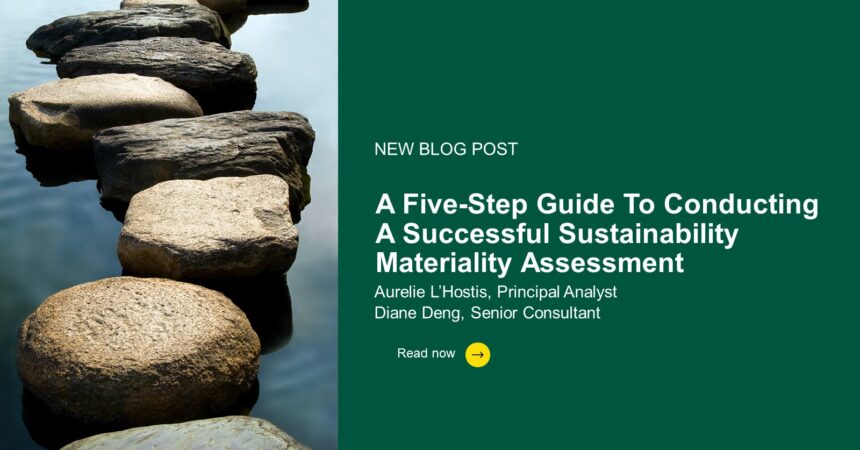Sustainability materiality assessment may not be a new concept for organizations looking to improve their sustainability practices. But emerging regulations – the EU CSRD (Corporate Sustainability Reporting Directive) in particular – now require companies to go through this rigorous process as part of their sustainability reporting. Materiality assessments help organizations identify the areas where their policies and practices result in material impact and define what they need to disclose in their sustainability statements. Beyond compliance, firms should also leverage that exercise to prepare, communicate, and act on their sustainability strategy.
There are three different approaches to sustainability materiality, all espoused by different organizations:
1) Financial materiality, which focuses on sustainability issues that impact a company’s financial position and performance. For example, the SEC climate-related disclosure rules require companies to disclose climate-related risks that are likely to materially impact their business in the short- and long-term.
2) Impact materiality, which focuses on how a company’s activities and value chain impact society and the environment. The Global Reporting Initiative’s (GRI) definition of materiality aligns with this perspective.
3) Double materiality, which integrates financial and impact materiality. The EU Corporate Sustainability Reporting Directive (CSRD) mandates a double materiality approach that integrates financial and impact materiality.
In our new report, How To Conduct A Sustainability Materiality Assessment, Forrester details those three approaches to sustainability materiality, and provides a five-step guide to clarify the structure and actions that executives need to take throughout the assessment process.
There Are Five Steps For Conducting A Sustainability Materiality Assessment

Firms shouldn’t underestimate the workload and resources required to conduct a materiality assessment as it needs to be a rigorous and iterative process. It will involve many different stakeholders and ideally should be conducted annually. To do this well, executives need to:
- Define the objective and scope of your sustainability material assessment. Your approach to the materiality assessment depends on what it’s used for: to meet regulatory requirements, to meet the needs of investors and participants in your value chain, or to structure strategic planning. Forrester can help you define and validate your sustainability materiality assessment approach.
- Identify relevant sustainability topics. Companies’ activities, business operations, and value chains have a major impact on the output of the materiality assessment. You’ll need to identify sustainability trends, reporting standards, and the topics and risks that are most relevant to your operations. Sustainability management software and ESG data and analytics providers can help your firm collect that information.
- Gather data and insights to assess the significance of sustainability topics. Leverage the risks and opportunities you’ve already identified and assessed in financial statements. Companies – particularly those disclosing double materiality – will also have to collect stakeholder insights. Forrester can help you map out stakeholder groups, design research programs, and gather insights.
- Analyze data and insights and prioritize sustainability topics. You will need to rate and weight stakeholders’ inputs and create a final list of material sustainability topics. To better communicate the outcomes of the materiality assessment and facilitate discussions with stakeholders, we recommend that you create a materiality matrix.
- Establish a scalable and repeatable process. The sustainability materiality assessment is an iterative and ongoing process. You should make it actionable and refine the process to make it scalable and repeatable. Use Forrester’s vendor evaluation to find suitable software solutions that can help you automate the process and keep your materiality assessment up to date and relevant.
If you’d would like to discuss this topic further, require hands-on assistance with your materiality assessment, or need help selecting the right partners, connect with us via an inquiry or guidance session.








